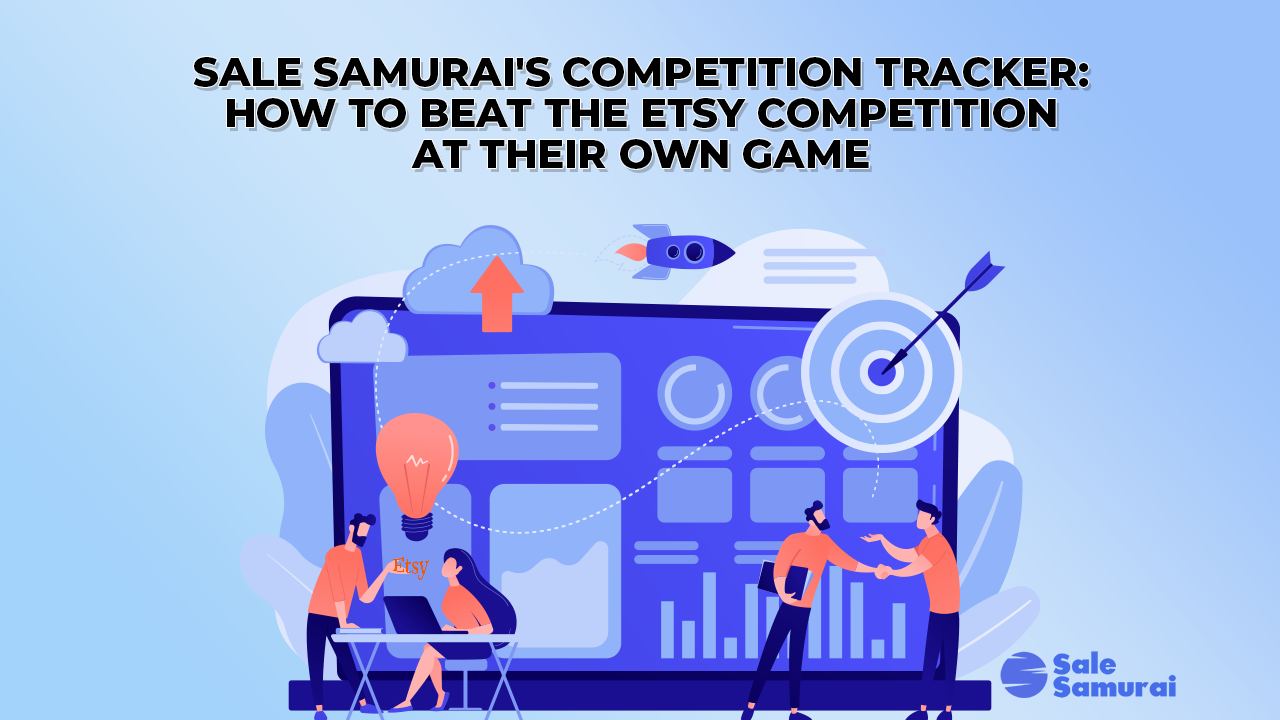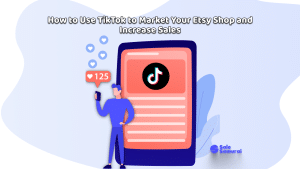
Creating for your Etsy store can be fun, but sometimes the running of it can be challenging. We all encounter obstacles from time to time, and it’s good to know where to find helpful information.
Sale Samurai’s blog archive is a priceless resource in this area, so I compiled some of the best into a condensed guide on how to stay compliant, creative and competitive without running into complications. You can either scan this article or click on the headlines to read the full blogs:
COPYRIGHTS: PROPER CARE AND MAINTENANCE

Understanding Copyright: Copyright laws grant creators the exclusive right to control the use of their works. This includes direct reproductions, like photocopies, and indirect ones, such as derivative artworks. The Harvard University Office of General Counsel defines it as a creator’s right “to control the use of his or her work by others.”
The Concept of Fair Use: This doctrine allows the use of copyrighted material under specific conditions, like commentary, criticism, or scholarly reports, without permission. For artists on Etsy, this means you can potentially use someone else’s work if you transform it significantly, giving it a new meaning or message. However, fair use is notoriously tricky and often subjective.
Steps to Avoid Copyright Issues:
- Research: Always check the copyright status of any work you plan to use. Visit www.copyright.gov to check official records, or contact the creator directly for permission.
- Contact the Copyright Owner: If possible, get permission from the copyright holder. This might involve a fee, but it secures your right to use the work and avoid legal trouble.
- Navigate Fair Use Cautiously: If permission isn’t feasible, and your use might qualify as fair use, ensure your adaptation adds new expression or meaning significantly different from the original. Document your creative process as this can be helpful if disputes arise.
KEEP TRACK OF THE COMPETITION WITH COMPETITION TRACKER

Sale Samurai’s Competition Tracker is a vital tool for Etsy sellers aiming to understand and navigate the competitive landscape. With over 5.2 million sellers on the platform, gaining a competitive edge is crucial, and this tool offers a strategic advantage by allowing sellers to track competitor shops and keywords effectively.
Key Features of the Competition Tracker:
- Shops: This feature allows you to add and monitor specific Etsy shops. You can see details like sales, number of listings, store popularity, and daily updates on store activities.
- Keywords: It enables tracking of keywords to see how competitors use them and how they perform over time, helping you to optimize your own listings.
How It Works:
- Adding Shops: Simply input a shop’s name to track its performance metrics such as sales and listings, which helps in comparing their strategy with yours.
- Keyword Analysis: Adding keywords relevant to your products reveals their market performance, providing insights into demand and competition levels.
Strategic Insights:
- Competitor Analysis: The tool gives a snapshot of competitors’ performance, showing what successful Etsy stores look like in terms of listings and sales, guiding you to adjust your strategy accordingly.
- Optimizing Keywords: Through keyword tracking, I learned about the high competition in categories like jewelry, emphasizing the importance of specific and distinctive keywords to improve visibility.
INTO EVERY ETSY SHOP A LITTLE RAIN MUST FALL – HERE’S AN UMBRELLA

If you’re experiencing a drop in Etsy sales, don’t worry—it’s a common issue many sellers face, and there are actionable steps you can take to turn things around. Here’s a concise breakdown of strategies I’ve learned to rejuvenate sales and keep your Etsy shop thriving:
- Stay Trendy: Continuously update your inventory based on market trends. If certain items aren’t selling, it’s time to phase them out and introduce new, relevant products.
- Analyze Your Competition: Keep an eye on other successful Etsy shops, especially those in your niche. Learn from their successes and mistakes, and adapt your strategies accordingly.
- Update Your Return Policy: Ensure your return policy is clear, straightforward, and customer-friendly. A flexible return policy can enhance customer trust and encourage repeat business.
- Rebrand and Redesign: Periodically refresh the look of your Etsy shop to keep it modern and appealing. Align your shop’s theme with current trends or seasonal events.
- Ramp Up Marketing and SEO: Enhance your shop’s visibility by improving SEO, engaging on social media, and employing targeted marketing strategies like email and content marketing.
- Offer Free Shipping: Consider offering free shipping to attract more buyers, as high shipping costs are often a deterrent for potential customers.
- Improve Product Photos: High-quality, appealing photos are crucial. They attract more views and can significantly increase conversion rates.
- Revise Listings and Product Descriptions: Regularly update your listings to ensure they are SEO-optimized and clear, making it easier for customers to find and understand your products.
- Create a Memorable Slogan: Develop a catchy slogan that resonates with your brand identity. This can help make your shop more memorable and distinct from competitors.
- Offer Discounts and Giveaways: Implement discounts and organize giveaways to draw in customers, especially during slower sales periods. These promotions can boost immediate sales and increase long-term customer engagement.
By adopting these strategies, you can enhance your shop’s appeal and performance, ensuring your sales numbers bounce back and continue to grow. Remember, the key to success on Etsy is staying adaptable, proactive, and customer-focused.
ELIMINATING THE SUSPENSE OF BEING SUSPENDED (OR CLOSED)

Discovering that your Etsy shop has been closed or deactivated can be a distressing experience. However, there are steps you can take to address the situation and potentially reactivate your account. Here’s a concise guide on what to do if you find yourself in this predicament.
Immediate Actions:
- Respond to the Suspension Email Promptly: Carefully read the email from Etsy’s Integrity Department. If they request specific information, respond accurately and concisely. Avoid venting frustrations as a positive tone can influence the outcome favorably.
- Fulfill Outstanding Orders: Even if your shop is suspended, continue to honor any existing orders by either completing them or issuing refunds. This maintains your reputation and complies with Etsy’s expectations.
The Appeal Process:
- Prepare Your Appeal: If your account is marked for permanent suspension, you’ll need to formally appeal the decision. Visit Etsy’s help section and follow the guidelines for submitting an appeal. Include details about your business operations, any factors that led to the suspension, and the steps you’re taking to resolve the issues.
- Clarify Compliance: In your appeal, make sure to explain how your products comply with Etsy’s policies. Be thorough in outlining your business’s compliance and any misunderstandings or corrections you’ve made.
Considerations for Reopening or Starting Fresh:
- Avoid Opening a New Account: Etsy’s policy is clear—opening a new account after a permanent suspension is not allowed. This can lead to further complications and is not advisable.
Prevent Future Issues:
- Understand Etsy’s Policies: Familiarize yourself with Etsy’s terms, especially what is not allowed to be sold on the platform. This includes prohibited services and products that could lead to another suspension.
- Provide Excellent Customer Service: Address customer complaints and issues promptly and courteously. Ensuring customer satisfaction can prevent many issues that lead to shop suspension.
Running an Etsy business is both exhilarating and terrifying, but we’re here to help you understand how to navigate the difficult parts.
Bookmark this article and use it as a cheat sheet!





